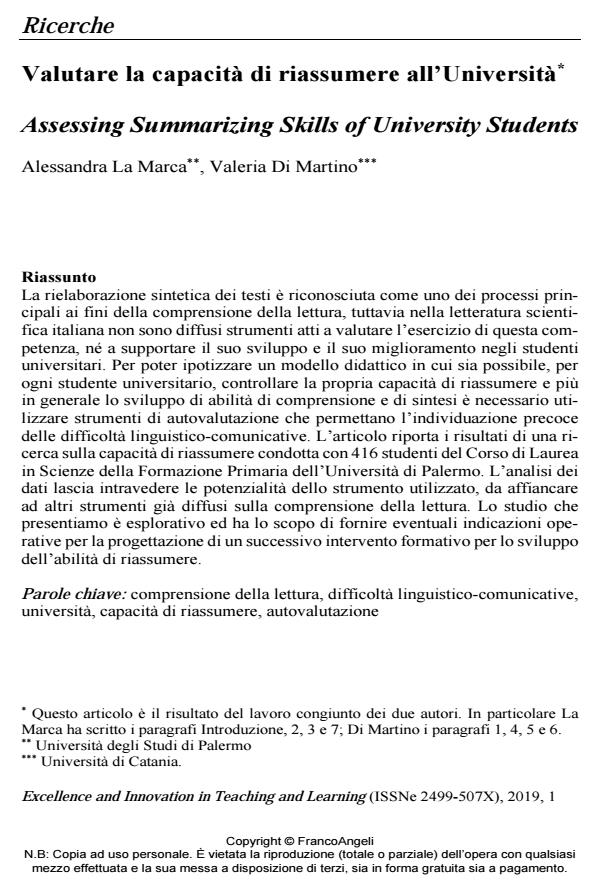Valutare la capacità di riassumere all’Università
Titolo Rivista EXCELLENCE AND INNOVATION IN LEARNING AND TEACHING
Autori/Curatori Alessandra la Marca, Valeria Di Martino
Anno di pubblicazione 2019 Fascicolo 2019/1
Lingua Italiano Numero pagine 18 P. 5-22 Dimensione file 322 KB
DOI 10.3280/EXI2019-001001
Il DOI è il codice a barre della proprietà intellettuale: per saperne di più
clicca qui
Qui sotto puoi vedere in anteprima la prima pagina di questo articolo.
Se questo articolo ti interessa, lo puoi acquistare (e scaricare in formato pdf) seguendo le facili indicazioni per acquistare il download credit. Acquista Download Credits per scaricare questo Articolo in formato PDF

FrancoAngeli è membro della Publishers International Linking Association, Inc (PILA)associazione indipendente e non profit per facilitare (attraverso i servizi tecnologici implementati da CrossRef.org) l’accesso degli studiosi ai contenuti digitali nelle pubblicazioni professionali e scientifiche
La rielaborazione sintetica dei testi è riconosciuta come uno dei processi principali ai fini della comprensione della lettura, tuttavia nella letteratura scientifica italiana non sono diffusi strumenti atti a valutare l’esercizio di questa competenza, né a supportare il suo sviluppo e il suo miglioramento negli studenti universitari. Per poter ipotizzare un modello didattico in cui sia possibile, per ogni studente universitario, controllare la propria capacità di riassumere e più in generale lo sviluppo di abilità di comprensione e di sintesi è necessario utilizzare strumenti di autovalutazione che permettano l’individuazione precoce delle difficoltà linguistico-comunicative. L’articolo riporta i risultati di una ricerca sulla capacità di riassumere condotta con 416 studenti del Corso di Laurea in Scienze della Formazione Primaria dell’Università di Palermo. L’analisi dei dati lascia intravedere le potenzialità dello strumento utilizzato, da affiancare ad altri strumenti già diffusi sulla comprensione della lettura. Lo studio che presentiamo è esplorativo ed ha lo scopo di fornire eventuali indicazioni operative per la progettazione di un successivo intervento formativo per lo sviluppo dell’abilità di riassumere.
Parole chiave:Comprensione della lettura, difficoltà linguistico-comunicative, università, capacità di riassumere, autovalutazione
Alessandra la Marca, Valeria Di Martino, Valutare la capacità di riassumere all’Università in "EXCELLENCE AND INNOVATION IN LEARNING AND TEACHING" 1/2019, pp 5-22, DOI: 10.3280/EXI2019-001001